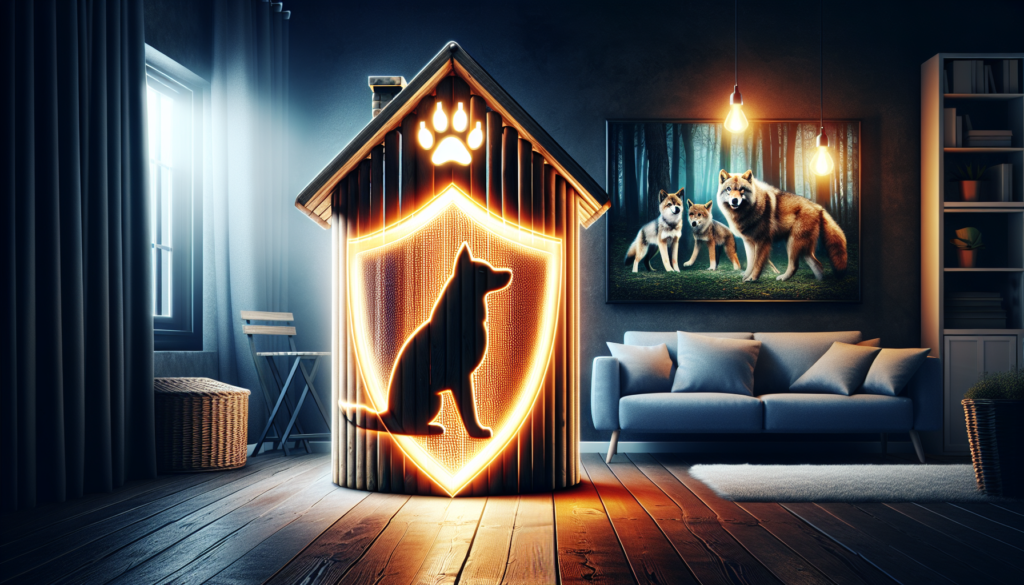If you’re a pet owner, you know that keeping your furry friends safe is a top priority. But what can you do to protect them from potential predators? From roaming neighborhood cats to more dangerous wildlife, there are steps you can take to ensure your beloved pets stay out of harm’s way. In this article, we will explore effective strategies and practical tips on how to safeguard your pets from predators, enabling you to have peace of mind while your pets enjoy their outdoor adventures.

Understanding the Threat
Identifying the Local Predators
To effectively protect your pets from predators, it is crucial to identify the local predators in your area. Different regions have different types of predators, such as coyotes, foxes, raccoons, and even larger predators like mountain lions or bears. Researching and understanding the predators in your locality will help you tailor your protective measures accordingly.
Studying Prey-Predator Dynamics
Understanding the dynamics between predators and prey can provide valuable insights into their behavior and help you develop effective strategies to protect your pets. Predators often hunt during specific times of the day or have certain behaviors that can be anticipated. By studying their patterns, you can take appropriate precautions to safeguard your pets during their most vulnerable times.
Securing the Boundaries
Installing a Sturdy Fence
One of the first steps in protecting your pets from predators is to install a sturdy fence around your property. Choose a fence that is tall and difficult to climb. Avoid chain-link fences, as they can be easily scaled by predators. Opt for solid wood or vinyl fences that provide better protection. Make sure the fence is buried at least a foot deep to prevent predators from digging under it.
Adding an Electric Fence
In areas with a high predator population, adding an electric fence can be an effective deterrent. The mild electric shocks emitted by these fences can discourage predators from attempting to cross them. However, it is essential to ensure that the electric fence meets local regulations and does not pose a risk to your pets or other animals.
Using Motion-Activated Lights
Installing motion-activated lights around the perimeter of your property can be a useful tool in deterring predators. These lights will automatically turn on when they detect movement, surprising and scaring away any potential threats. Predators are typically wary of well-lit areas, so this simple measure can help keep them at bay and protect your furry friends.
Creating a Safe Outdoor Space
Building a Predator-Proof Enclosure
To provide your pets with a safe outdoor space, consider building a predator-proof enclosure within your property. This enclosure can be a designated area where your pets can have supervised outdoor time without the risk of encountering predators. Use strong materials like steel or heavy-gauge wire mesh to construct the enclosure, and ensure there are no gaps or weak spots that predators could exploit.
Designing Landscaping to Deter Predators
Strategic landscaping can act as a natural deterrent for predators. Planting thorny and prickly bushes around the perimeter of your property can discourage predators from entering. Additionally, removing potential hiding spots, such as tall grass or dense shrubbery, can make it difficult for predators to approach undetected. Consulting with a local landscaper can help you design a predator-resistant outdoor environment for your pets.
Choosing the Right Pet Housing
Opting for Secure Cages or Kennels
When your pets need to spend time outdoors unsupervised, it is crucial to provide them with secure housing. Opt for cages or kennels made of strong and durable materials that cannot be easily damaged or broken by predators. Ensure that the housing has a secure lock and that there are no gaps or weak points where predators could gain access.
Selecting Predators-Resistant Materials
When selecting pet housing, choose materials that are resistant to predators. Avoid using materials such as plastic or weak wire mesh that can be easily destroyed or breached. Instead, opt for stronger construction materials like metal or solid wood. Reinforce any weak areas, such as doors or joints, to prevent predators from breaking in.

Providing Adequate Supervision
Never Leaving Pets Unattended Outdoors
Pets should never be left unattended outdoors, especially in areas prone to predator sightings. Supervision is vital to quickly intervene if a predator approaches or attempts to harm your pets. Always keep an eye on your furry friends and bring them indoors if you need to step away or when it starts to get dark, as many predators are more active at night.
Organizing Playdates with Fellow Pet Owners
To provide your pets with outdoor playtime while minimizing the risk of predator encounters, consider organizing playdates with fellow pet owners. Arrange times for your pets to play together in a securely fenced area. With multiple pets and owners present, the chances of predators approaching are significantly reduced, providing a safe and enjoyable environment for your pets to socialize.
Utilizing Training and Distraction Techniques
Teaching Pets How to Respond to Danger
Training your pets to respond to danger can be a crucial step in protecting them from predators. Teach them to recognize and respond to warning signs, such as certain sounds or behaviors associated with predators. Practice recall commands regularly to ensure your pets know how to come to you if they sense danger. Proper training can help them stay safe and out of harm’s way.
Using Noise or Visual Deterrents
Using noise or visual deterrents can help keep predators at bay. Install motion-activated devices that emit loud noises or bright lights when triggered, which can startle and scare off potential predators. You can also use visual deterrents like scarecrows or reflective objects strategically placed around your property to make predators think twice before approaching.
Managing Attractants in the Environment
Regularly Cleaning Pet Food Areas
Leaving pet food or water bowls outside can attract not only your pets but also unwanted predators. To prevent this, establish designated feeding areas inside your home. Clean up any spilled food promptly and store pet food in secure containers to eliminate enticing scents that may attract predators. By managing attractants in the environment, you lessen the chance of predators being drawn to your property.
Removing Potential Nesting Sites for Predators
Predators often look for places to nest or seek shelter near their hunting grounds. To discourage them from settling near your property, remove potential nesting sites. Seal off any openings or burrows in trees, sheds, or buildings. Regularly inspect and maintain your property, ensuring no structures or debris are providing safe havens for predators.
Using Predator-Repellent Products
Applying Pet-Safe Repellent Sprays
There are pet-safe repellent sprays available on the market that can deter predators from approaching your property. These sprays typically use natural ingredients with strong scents that predators find unpleasant. Apply these repellents around the perimeter of your property, focusing on areas where predators are more likely to approach. However, ensure that the repellent you choose is safe for your specific pets.
Using Ultrasonic Devices to Deter Predators
Ultrasonic devices emit high-frequency sounds that are inaudible to humans but irritating to predators. These devices can be placed strategically around your property to discourage predators from approaching. Keep in mind that ultrasonic devices may not be effective for all types of predators, so it’s essential to research the specific predator species in your area before investing in these devices.
Maintaining a Healthy Pet Lifestyle
Ensuring Regular Exercise for Pets
Regular exercise helps keep your pets healthy and reduces their vulnerability to predators. Engage in interactive playtime with your pets, providing mental stimulation and physical activity. Take them for walks or runs in safe areas away from potential predator hotspots. By keeping your pets active and fit, you enhance their overall well-being and increase their chances of avoiding predators.
Providing Proper Nutrition and Hydration
A healthy diet is essential for your pets’ overall health and vitality. Proper nutrition strengthens their immune system and helps maintain healthy fur and skin, making them less susceptible to predator attacks. Ensure they have access to fresh and clean water at all times to prevent dehydration, especially during hot weather. Consult with a veterinarian to determine the best diet for your pets’ specific needs.
Knowing When to Seek Professional Help
Consulting with Animal Control or Wildlife Experts
If you experience persistent predator issues despite implementing preventative measures, it may be necessary to seek professional help. Consult with local animal control or wildlife experts who have the knowledge and experience to address predator problems effectively. They can provide valuable advice on additional measures to protect your pets or help manage the predator population in your area.
Considering the Use of Traps or Noise Devices
In extreme cases, when your pets’ safety is at immediate risk, you may need to consider the use of traps or noise devices. Traps should only be used under the guidance of professionals and with proper permits, as they can pose a danger to both the predator and unintentional targets. Noise devices, like air horns or sirens, can startle and temporarily deter predators, giving you time to ensure the safety of your pets.
By following these comprehensive steps, you can effectively protect your pets from predators and provide them with a safe and secure environment to thrive. Remember, the safety of your pets is a top priority, and with the right measures in place, you can enjoy peace of mind while ensuring their well-being.

